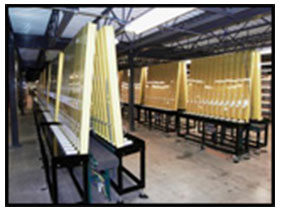For consumer goods retailers, the explosive growth of small internet orders is both good and bad news. With no, or extremely low, shipping charges and very liberal return/exchange policies, online shoppers are not concerned with the frequency and/or size of their purchases. Aside from the obvious cost implications, this is considered a good thing by most retailers looking to take full advantage of promotional and impulse purchasing.
However, the consequence at the DC of smaller more frequent orders can be huge. As an example, one VP of Operations described a situation where a large customer who ordered standard 12-packs last year, is now ordering 6-packs. This one simple change increases the unit handling volume from 40,000 to 80,000 thereby increasing DC handling & shipping costs.
Holste Says... |
 |
| It makes good sense to produce and package product at manufacturing plants so as to optimize the order fulfillment process. |
 |
What do you say? |
 |
| Click here to send us your comments |
|
|
|
The trend also forces many DCs into more labor intensive discrete order piece picking methods where they had previously been able to take advantage of full case batch order picking and automated sorting system solutions.
A major component of an efficient supply chain is moving products with a minimum number of touches. Therefore, it makes good sense to produce and package product at manufacturing plants so as to optimize the order fulfillment process.
For example: In a DC where two thirds or more of products purchased are in less-than-full-case quantities, those items must be picked and packed manually before they leave the DC. Producing smaller inter-pack quantities at manufacturing would greatly reduce the number of touches required to process orders at the DC. In fact, given the on-going advances in automated picking technologies, picking more inter-packs would enhance the justification for automation.
Fortunately, there is a large variety of automated picking solutions being offered by system providers.
 The challenge is adopting the picking method that best fits the requirements. While the traditional batch picking and automated sorting model has worked well in the past, the trend toward smaller more frequent ordering pattern favors a discrete order picking model. This is the reason a growing number of companies are investing in the development and deployment of alternative automated discrete order picking solutions such as A-Frames (pictured at right), which have actually been available for quite some time but are now experiencing a renewed interest. The challenge is adopting the picking method that best fits the requirements. While the traditional batch picking and automated sorting model has worked well in the past, the trend toward smaller more frequent ordering pattern favors a discrete order picking model. This is the reason a growing number of companies are investing in the development and deployment of alternative automated discrete order picking solutions such as A-Frames (pictured at right), which have actually been available for quite some time but are now experiencing a renewed interest.
Automate Item Picking (AIP) is just beginning to be deployed in selected DC applications. One AIP design is based on a shared picking principle: The robot picks the items that it is able to pick, which according to Swisslog, can be up to 30-60% of the shippers product range – and a worker finishes the order. By using this approach, humans and robots can safely work side by side. The AIP workstation, which can be operated in human robot collaboration mode, is designed to be a “Plug and Play System”, meaning a person can be replaced easily at a work station were single item picking is done. This allows for a more flexible operation at different workstations with minimum start up time. This AIP solution has been designed for use in new as well as in existing "Goods to Person" applications.
By applying emerging AIP technologies with advanced software systems shippers can achieve high levels of operational flexibility and productivity. By adopting a broad range of automated picking solutions, the order fulfillment labor component is greatly reduced while the inherent modularity and scalability lowers the initial cost and therefore, further enhances its appeal. However, some caution must be taken here so as not to increase manual replenishment cost to the point where it may offset any real savings gained.
Shippers who are seeing their per piece handling costs trending upward should take notice that a large variety of automated piece picking and case picking technologies will be on display at ProMat 2017 - April 3 thru 6, 2017 in Chicago, IL.
Final Thoughts
Other than for giant retailers like Amazon, there is not much any individual shipper can do about trends in the marketplace that impact on their cost of doing business except to develop and deploy more cost effective solutions. As it relates to warehousing and distribution, emerging technologies such as AIP along with more established solutions like AGVs (equipped with robotics and GPS vision guided systems) are the most up-to-date developments to combat escalating order fulfillment cost.
Any reaction to this Expert Insight column? Send below.
Your Comments/Feedback
|